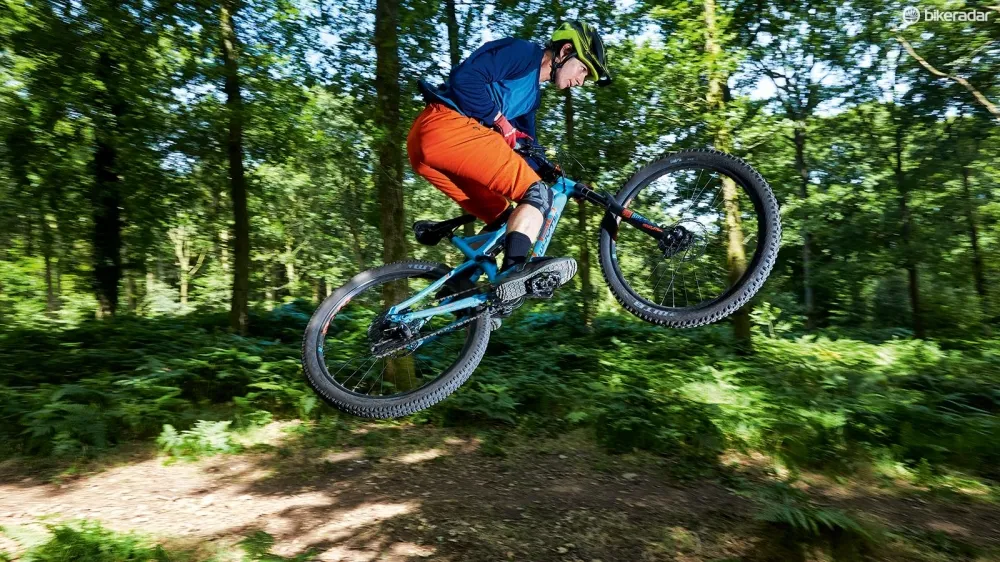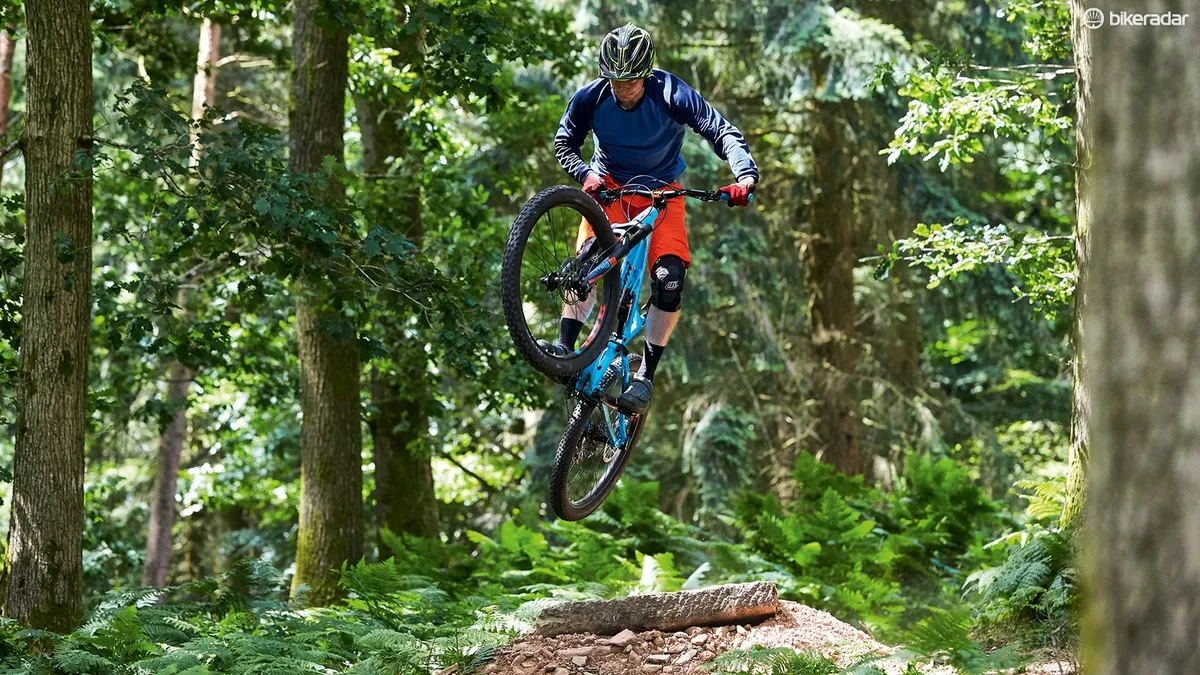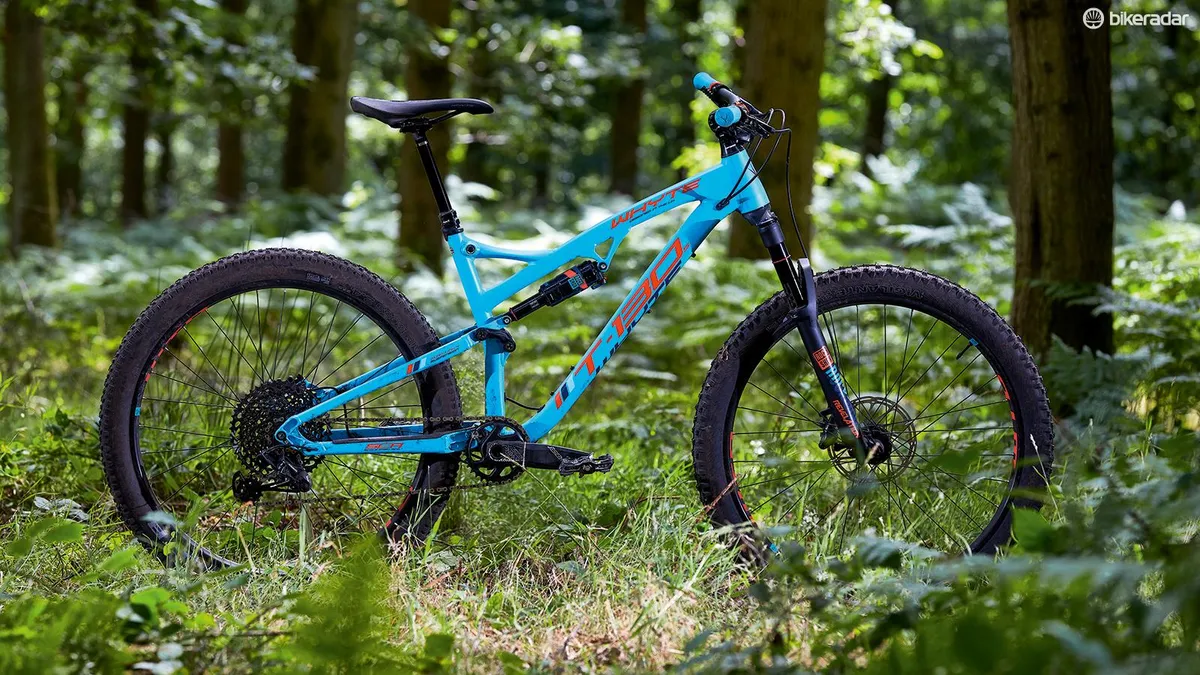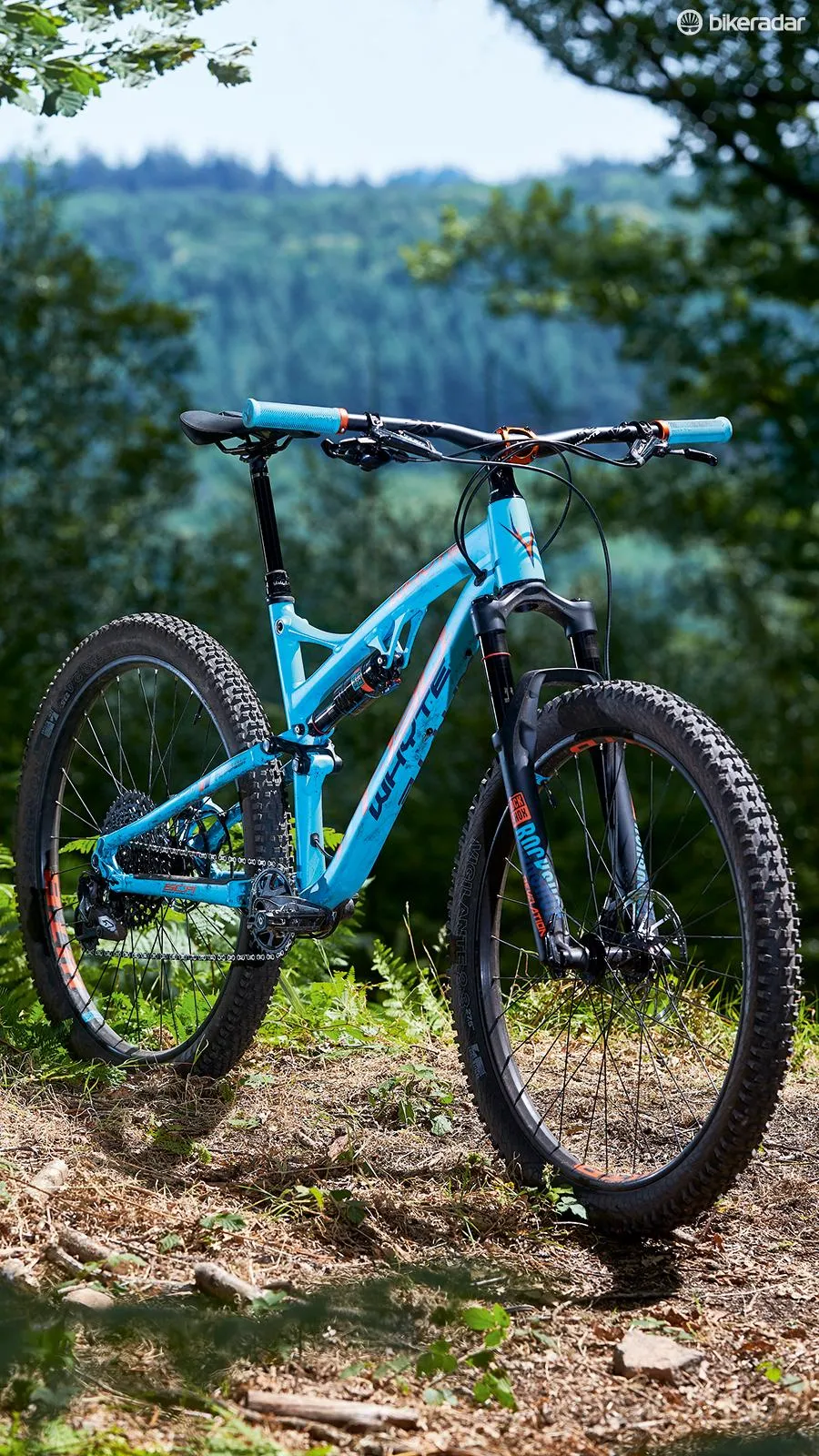Whyte hasn’t changed the multi-award-winning T-130 rolling chassis this year, but SRAM’s latest transmission and suspension tweaks take its addictively flat-out performance up an extra level for 2018.
Behind the chunky convex head tube, the big top tube tapers and curves away over the top of the shock. A dramatically ovalised bridging piece connects it to the top of the seat tube, with Whyte’s neat internal seatpost clamp set into the junction.
The subtly S-shaped down tube has Crud Catcher as well as bottle cage bolts, with the controls entering into well-sealed plugs at the top end. Whyte’s broad SCR (Single Chain Ring) main-pivot architecture is carried by the threaded bottom bracket block. Out back, pocketed Boost dropouts lead onto tapered seatstays.
With a curved seat tube and no bridge, there’s masses of clearance despite the short rear end and plump rubber on broad rims. The stays are directly aligned with the shock, with a chainstay pivot for neutral pedalling and a small, kinked, H-shaped link on the seat tube to alter the shock rate and orientation slightly. As usual with Whyte, all the pivot bearings are lifetime warrantied.
Whyte T-130 S kit

The 2018 T-130 S leaps up £200 compared to this year’s bike but you’re getting a lot for the extra outlay.
SRAM’s GX Eagle transmission, with its 500 percent, 12-speed gear range, is levered round by stiff Truvativ Descendant cranks. Reasonably wide tyres sit on 29mm (internal) rims to give 58 and 59mm widths that help float the Whyte over stutter bumps, with extra traction up front courtesy of WTB’s ‘High Grip’ compound.
The Whyte 760mm bar and 40mm stem (the large size gets a 50mm) are well-proportioned for rowdy riding, and the RockShox Reverb dropper post sorts seat height out with the press of a plunger.
Up front, the Revelation RC fork is stiff and well connected to the trail, through the sensitive initial stroke and into the impressively supportive mid stroke. While the ‘Motion Control RC’ damper isn’t as sophisticated and seamlessly controlled as the ‘Charger 2’ cartridge in the Pike, the position-sensitive ‘Rapid Recovery’ rebound means you can push it hard before it starts bucking around.
That only leaves the twin-pot SRAM Level brakes (which are less powerful and communicative than their quad-cylinder Guide stoppers) and the tendency of the tyres to crumple at low pressures to complain about.
Whyte T-130 S ride impression

Those glitches can’t stop the Whyte being an absolute blast on the trail though. Reach isn’t as extreme as on the Mondraker, which was also on test, but at 467mm (large) it’s long compared to most bikes, and the head angle is fairly slack at 67 degrees.
The grippy front tyre on a wide rim and the low (330mm) bottom bracket add to the totally planted confidence. While it’s heavy for a 130mm 650b bike and can’t match the Trek Fuel EX 8 and Scott Spark 945 29ers for fast-rolling efficiency, the wheels are still responsive out of corners and the short (420mm) chainstays keep rear suspension reactions quick.
The proven Whyte kinematics keep it connected and ready to drive hard or spin efficiently too, whatever the trail is doing.
Both the fork and the shock have a really broad bandwidth of acceptable tune too, so you can just set up basic sag and rebound and hit the trail flat out, rather than fussing around with pressures and settings until you find the sweet spot.
The result is a bike that paradoxically feels both glued to the ground and instantly (and addictively) responsive, through the steering and the ease with which you can throw its weight around on the trail.
If fun is your principal riding priority, then the T-130 S is still the affordable benchmark to beat.


